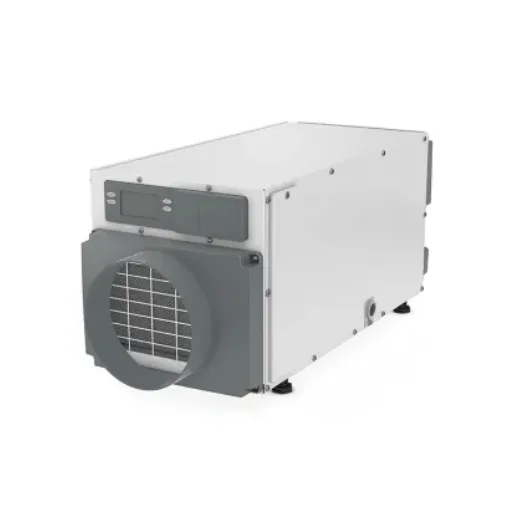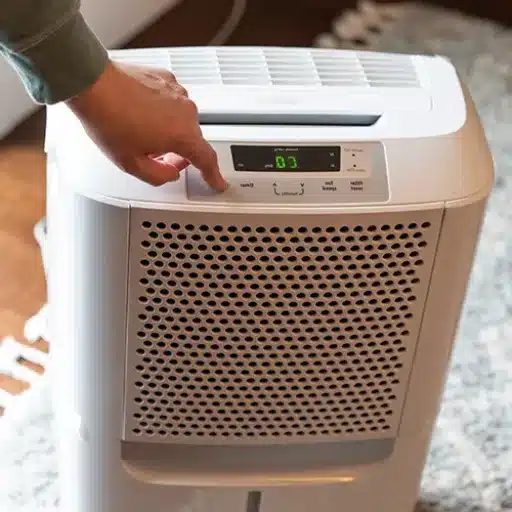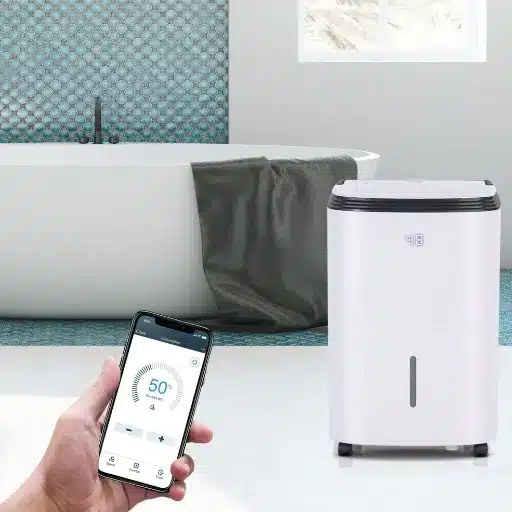Dehumidifiers are essential appliances for maintaining a comfortable and healthy living space, particularly in areas prone to excess humidity. But often, a common question arises—can you safely leave a dehumidifier running all the time? While these devices are designed to tackle moisture-related issues like preventing mold growth and reducing allergens, understanding their proper usage is crucial. This article dives into the considerations surrounding continuous operation of dehumidifiers, weighing the potential benefits against the risks. By the end, you’ll have a clear understanding of best practices to maximize your dehumidifier’s efficiency and ensure both safety and effectiveness.
How Does a Dehumidifier Work?
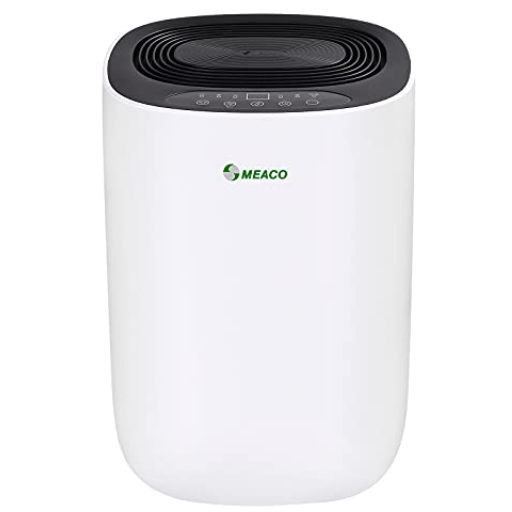
A dehumidifier removes excess moisture from the air to maintain a comfortable and healthy indoor environment. It works by drawing in humid air, passing it over cold coils to condense the moisture into water droplets, and then collecting this water in a tank or draining it through a hose. The now-drier air is reheated slightly before being released back into the room. This process helps regulate humidity levels, reducing the risk of mold growth, mildew, and allergens, while also improving overall air quality.
Understanding Humidity and Its Effects
Humidity refers to the amount of moisture present in the air, and it plays a significant role in shaping our environment and overall well-being. The ideal indoor relative humidity level typically ranges between 30% and 50%. When humidity levels rise above this range, the air feels heavy and uncomfortable, creating a prime environment for mold, dust mites, and bacteria to thrive. This can exacerbate allergies, respiratory issues, and other health conditions.
On the other hand, excessively low humidity—often experienced in winter or dry climates—can lead to dry skin, irritated sinuses, and an increased risk of catching colds or other illnesses, as dry air makes it easier for germs to travel. Prolonged exposure to low humidity can also cause damage to wooden furniture, flooring, and musical instruments due to cracking and warping.
Research highlights that maintaining optimal humidity levels can improve sleep quality, boost productivity, and support respiratory health. For example, studies have found that environments with balanced humidity can reduce the spread of airborne viruses, improving public health outcomes. Additionally, controlled humidity levels complement energy efficiency in heating and cooling systems, as air with the right moisture content retains temperature more effectively.
Understanding and managing indoor humidity is more than just a comfort factor—it is essential for creating a healthier, safer, and more sustainable living environment.
The Role of a Dehumidifier in Managing Humidity Levels
A dehumidifier plays an essential role in maintaining optimal indoor humidity, especially in regions prone to high moisture levels. Excessive humidity can lead to discomfort, promote the growth of mold and mildew, and negatively impact respiratory health. By extracting excess moisture from the air, dehumidifiers help create a more balanced and comfortable indoor environment.
Modern dehumidifiers are designed with advanced technology that ensures efficiency and ease of use. For example, many models feature adjustable humidity settings, energy-saving modes, and auto-shutoff capabilities to prevent overuse. According to industry data, maintaining an indoor relative humidity level of around 40-50% is ideal for preventing mold growth and reducing airborne allergens. Studies have shown that this range not only improves air quality but also preserves the structural integrity of homes by reducing the likelihood of dampness-related issues such as wood warping or paint peeling.
Additionally, investing in an energy-efficient dehumidifier can lower electricity costs while maintaining effective operation. Many of today’s models come with Energy Star certifications, which indicate significant energy savings compared to non-certified alternatives. Over time, this choice can lead to noticeable reductions in utility bills. Some units now also boast smart connectivity, allowing users to monitor and adjust humidity levels remotely through mobile applications.
For spaces with persistent humidity problems, such as basements or laundry areas, dehumidifiers are indispensable tools. Routine maintenance, including regular cleaning of filters and water reservoirs, ensures peak performance and longevity. By incorporating a dehumidifier into daily life, individuals can effectively combat the negative effects of moisture and foster a healthier living environment.
Components and Mechanism of a Dehumidifier
A dehumidifier is a sophisticated appliance designed to extract excess moisture from the air, preventing mold growth, structural damage, and health issues caused by high humidity. Its operation revolves around a set of key components working in synergy:
- Compressor: Acting as the central component, the compressor circulates refrigerant through the system. This enables the cooling process necessary for water vapor condensation.
- Refrigerant Coils (Evaporator and Condenser): Air is drawn into the unit and passed over the evaporator coils, which are cooled by the refrigerant. Moist air condenses into water droplets on these coils. The air is then reheated by the condenser coils, ensuring that expelled air is warm and dry.
- Fan/Blower: A fan or blower pulls moist air into the appliance and directs the filtered, dehumidified air back into the environment, ensuring continuous air circulation.
- Water Collection Reservoir or Drainage System: The condensed water collects in a built-in reservoir, which users need to empty manually. Alternatively, units equipped with direct drainage systems can channel water out constantly via a hose, offering convenience for long-term use.
- Hygrostat/Humidity Sensor: Integrated into modern dehumidifiers, the hygrostat monitors indoor humidity levels. These sensors enable the device to automatically adjust its operation to maintain the desired humidity range, typically between 30-50% for optimal comfort and health.
- Filters: Many dehumidifiers come with a filter to trap dust, pollen, and other airborne particles, improving both air quality and device longevity.
Mechanism of Action
When humid air enters the dehumidifier, it first passes through the filters to remove pollutants. The now-filtered air flows over the evaporator coils, where temperature differences cause the water vapor to condense. This water collects in the reservoir or passes through the drainage system, while the processed air is reheated via the condenser coils and recirculated. Advanced units are engineered to use energy-efficient designs, significantly reducing power consumption while maximizing moisture removal, ranging from 20 to 70 pints of water per day, depending on the unit’s capacity.
With modern technological advancements, some dehumidifiers are equipped with smart features, like app connectivity and AI-driven algorithms, allowing users to monitor and control operation remotely while reducing overall energy usage. Utilizing these components harmoniously, dehumidifiers create a balance between functionality, energy efficiency, and user comfort.
Can You Run a Dehumidifier All Day Without Risks?
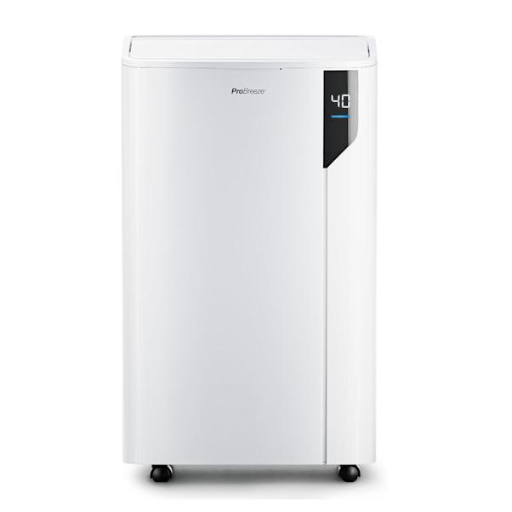
Yes, you can run a dehumidifier all day without significant risks, provided it is used correctly. Most modern dehumidifiers are designed with safety features like automatic shut-off when the water tank is full or when humidity levels reach the desired setting. However, to ensure safe and efficient operation, it is essential to maintain proper ventilation around the unit, clean the filter regularly, and avoid overworking the device in extreme conditions. Additionally, running it continuously may increase energy costs, so it’s best to use it only when necessary to achieve optimal humidity levels, typically between 30% and 50%.
Is It Safe to Leave a Dehumidifier Running Constantly?
Leaving a dehumidifier running constantly can be safe, but it depends on a variety of factors, including the type of dehumidifier, room size, humidity levels, and electrical considerations. Modern dehumidifiers are generally designed with safety features, such as automatic shut-off when the water tank is full or when the target humidity level is reached. This prevents overflows and reduces unnecessary energy expenditure.
It’s important to strike a balance in operation. Experts recommend maintaining indoor humidity levels within the optimal range of 30% to 50%, as levels below 30% can leave the air too dry, causing discomfort and even damage to furniture and wood. Running a dehumidifier 24/7 in environments where moisture fluctuates significantly, such as basements, may be necessary but should involve devices with energy-efficient ratings (like ENERGY STAR-certified models) to prevent excessive electricity consumption.
Additionally, regular maintenance is key. Filters should be cleaned or replaced as recommended by the manufacturer to ensure proper airflow and avoid overheating. Large-capacity dehumidifiers are better suited for continuous operation in larger spaces, while smaller units may be prone to wear if overworked in high-humidity conditions. By using programmable models or smart devices with built-in humidistats, users can automate operation to only run the device when necessary, optimizing both safety and efficiency.
By monitoring your specific environment and selecting the right dehumidifier model, continuous operation can be both effective and safe without unnecessarily driving up energy costs or harming the unit’s lifespan.
Potential Risks and Concerns of Constant Use
Continuous operation of a dehumidifier, while beneficial in certain environments, can present a number of risks if not managed properly. One primary concern is the increased energy consumption. Running a dehumidifier non-stop can significantly raise electricity bills, especially if using an older or less energy-efficient model. On average, dehumidifiers consume between 300 to 700 watts per hour, meaning constant use can quickly translate to higher operational costs.
Another notable issue is the potential for overheating in dehumidifier units. Prolonged operation without regular maintenance can lead to clogged filters or blocked airflow, causing excessive strain on the motor and compressor. This not only impacts the appliance’s performance but can also shorten its lifespan. It is crucial to clean the filters regularly—generally every two weeks, depending on usage—to ensure smooth operation and prevent internal damage.
Furthermore, running a dehumidifier in an already overly dry environment can negatively affect indoor air quality, leading to excessively low humidity levels. Humidity below 30% can dry out the skin and respiratory passages, increasing the risk of irritation or discomfort for individuals. This could particularly pose challenges in colder months when indoor air tends to be dry.
Lastly, improper drainage methods pose another risk. For units that require a manual emptying of water tanks, neglecting regular maintenance can result in water overflow or pooling. This can create a breeding ground for mold and bacteria, defeating the purpose of dehumidification entirely. To mitigate this, using a continuous drain system or regularly monitoring the tank’s capacity is recommended. By being mindful of these potential concerns, users can optimize the benefits of their dehumidifiers while avoiding costly or harmful outcomes.
How Long Should You Run Your Dehumidifier?
The length of time you should run your dehumidifier depends on several factors, including the humidity level in your space, the size of the room, and the capacity of your unit. For optimal performance, most experts recommend maintaining indoor humidity levels between 30% and 50%. To assess your current humidity levels, a hygrometer can provide precise measurements.
If your space experiences high humidity, such as after heavy rainfall or in a basement prone to moisture, you may need to run the dehumidifier continuously until the desired humidity is reached. On average, a standard dehumidifier can take between 8 to 12 hours to significantly reduce excess moisture in a medium-sized room. However, modern dehumidifiers often feature built-in humidity sensors and auto-shutoff settings, allowing them to automatically turn off once the ideal level is achieved.
For preventative maintenance or everyday use in relatively dry conditions, running the dehumidifier for about 6 to 8 hours per day should suffice. Be mindful of seasonal variations as well—humid summer months may require prolonged use, while drier winter conditions may demand less intervention. By monitoring your environment and adjusting your usage accordingly, you can maximize energy efficiency and create a healthier living space.
What Are the Optimal Humidity Levels for Your Home?
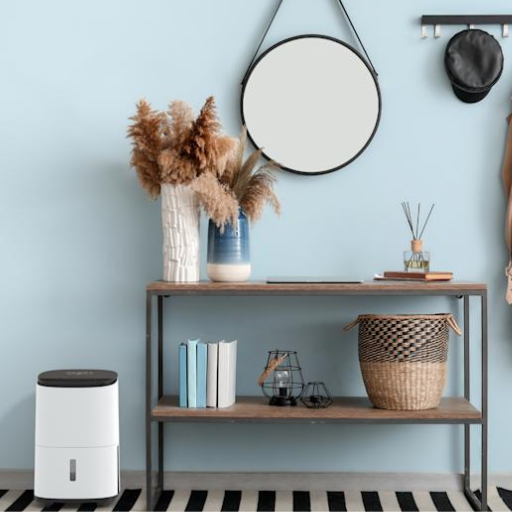
The optimal humidity levels for your home should typically range between 30% and 50%. This range helps maintain a comfortable atmosphere, prevents the growth of mold and mildew, and reduces the risk of respiratory issues. During hotter months, aim for humidity closer to 50%, and in colder months, keep it closer to 30% to prevent condensation on windows and other surfaces. Using a hygrometer can help you easily monitor and maintain these levels for a healthier indoor environment.
Determining the Right Humidity Level in Your Home
To determine the right humidity level in my home, I use a hygrometer to regularly monitor the indoor moisture. I aim to keep the humidity between 30% and 50%, adjusting closer to 50% during warmer months and closer to 30% during colder months. This balance ensures a comfortable and healthy environment while preventing problems like mold growth or window condensation.
Using a Dehumidifier to Achieve Desired Humidity Levels
A dehumidifier is a highly effective tool for maintaining optimal indoor humidity levels. It works by drawing in moist air, removing excess moisture, and expelling drier air back into the room. When selecting a dehumidifier, it is essential to consider factors such as room size, humidity conditions, and energy efficiency. For example, dehumidifiers are often rated in pints per day, indicating how much moisture they can remove in 24 hours. Small-capacity units (up to 30 pints per day) are ideal for bathrooms or single rooms, while larger units (50+ pints per day) are suitable for basements or larger areas with significant humidity.
Modern dehumidifiers are equipped with enhanced features like built-in humidity sensors, programmable timers, and auto-shutoff functions, ensuring efficient operation. Data suggests that running a dehumidifier continuously in extremely humid conditions can decrease relative humidity by 10-15% within a few hours, creating a more comfortable living environment. Additionally, energy-efficient models can help reduce energy consumption by up to 15%, making them both environmentally friendly and cost-effective.
For optimal performance, place the dehumidifier in a central location with unobstructed airflow, ensure regular cleaning of the filters, and empty the water reservoir frequently unless it has a built-in drainage system. With consistent use, a dehumidifier can not only keep your home’s humidity in check but also improve air quality and protect against issues like dust mites, mold, and mildew.
Impact of Excess Moisture on Indoor Air Quality
Excess moisture in indoor spaces can severely impact air quality, posing health risks and damaging property. When humidity exceeds 60%, it creates optimal conditions for the proliferation of mold, dust mites, and bacteria. Mold in particular can release allergens and irritants into the environment, which may cause respiratory problems, allergies, and even asthma attacks. The U.S. Environmental Protection Agency (EPA) considers indoor moisture control essential for indoor air quality, suggesting a range of 30–50% relative humidity indoors.
Excessive moisture is also known to strengthen the emission of volatile organic compounds (VOCs), which can be found carpeted surfaces, walls, and even furniture, thereby diminishing air quality. High humidity over extended periods can also have a detrimental effect on construction materials like wood and drywall, leading to rot, warp, and the generation of foul smells. Research further indicates that proper humidity control not only mitigates the risks posed by excess moisture, but also enhances the overall comfort and safety of the space’s occupants. With the careful application of dehumidifiers, proper ventilation, and routine servicing of HVAC units, a balanced indoor environment can be easier to achieve.
How to Choose the Best Home Dehumidifier?
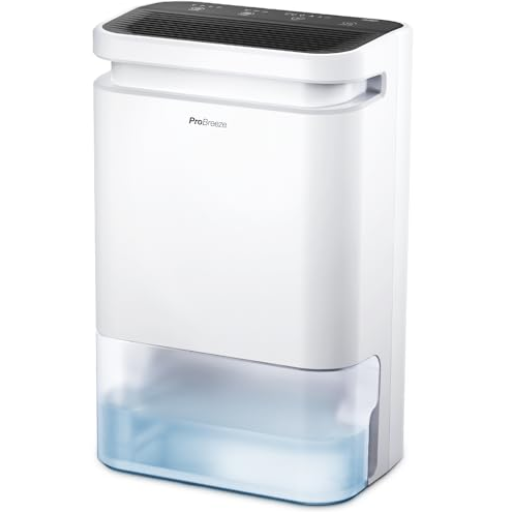
Assess the Room Size
Choose a dehumidifier with the right capacity for the space. Small units work well for closets or bathrooms, while larger units are ideal for basements or open living areas. Manufacturers often provide a square footage guide to match their products.
Check the Humidity Levels
If your space is very damp, opt for a high-capacity dehumidifier capable of removing more moisture per day. For mildly humid areas, a standard unit should suffice.
Energy Efficiency
Look for Energy Star-certified models to save on electricity costs while effectively controlling humidity.
Noise Levels
Consider models designed for quiet operation, especially if placing the dehumidifier in a bedroom or living area.
Ease of Maintenance
Select a model with a removable water tank and an easy-to-clean filter. For added convenience, a unit with a continuous drainage option can minimize the need for manual emptying.
Special Features
Features like humidity controls, timers, and auto-shutoff add flexibility and convenience. Pick a unit based on the features you find most valuable.
By focusing on these factors, you can find a reliable dehumidifier that keeps your home comfortable and healthy.
Factors to Consider When Buying a Dehumidifier
Energy Efficiency
When selecting a dehumidifier, energy efficiency should be a key consideration. Look for units with the ENERGY STAR® certification, as these models use up to 30% less energy compared to non-certified units. This not only reduces environmental impact but also lowers utility bills over time. For instance, a 50-pint ENERGY STAR-certified dehumidifier typically consumes about 600 watts per hour, making it an economical option for continuous use in medium to large spaces.
Capacity and Coverage
The capacity of a dehumidifier, often measured in pints of water removed per day, should align with the size and humidity levels of the intended space. For instance, a 30-pint dehumidifier is ideal for small spaces like bedrooms or offices, whereas a 50 to 70-pint model is better suited for large basements or living areas. Coverage area is another critical factor—always verify the manufacturer’s recommended square footage to ensure the unit can effectively handle the room size.
Noise Levels
Noise level is another detail to consider, especially if you plan to use the dehumidifier in occupied spaces like bedrooms or living rooms. Many models fall within a range of 50 to 70 decibels; however, quieter options are available if minimizing sound is a priority. Models marketed as “whisper-quiet” often operate at around 40 decibels, suitable for maintaining a peaceful home environment.
Maintenance Requirements
Ease of maintenance can significantly impact long-term satisfaction with your dehumidifier. Look for features like removable and washable filters, which are more cost-effective and eco-friendly. Additionally, consider the ease of draining water—units with large, removable reservoirs often require fewer trips to empty the tank. For even greater convenience, opt for a model that supports continuous drainage via a hose connection.
Smart Technology
Modern dehumidifiers often include smart technology for added convenience. Wi-Fi-enabled models allow remote monitoring and control via smartphone apps, enabling users to adjust humidity levels, set schedules, and receive maintenance alerts from anywhere. Additionally, some units are compatible with voice assistants like Alexa or Google Assistant, providing seamless integration into smart home ecosystems.
By carefully evaluating these factors and comparing specifications, you can select a high-performing dehumidifier tailored to your specific needs, ensuring a healthier and more comfortable indoor environment.
The Importance of Size and Capacity
The size and capacity of a dehumidifier are crucial factors that directly impact its performance and suitability for your space. Capacity refers to how much moisture a dehumidifier can remove within a 24-hour period, usually measured in pints. Smaller units with a capacity of 20–30 pints are ideal for compact rooms or areas with mild humidity issues, such as bedrooms or closets. On the other hand, larger units, designed for spaces over 2,500 square feet, can extract 50–70 pints of moisture daily, making them perfect for basements, living rooms, or entire floors.
It’s essential to match your dehumidifier’s size to the square footage of your space and the level of moisture present. For instance, if you live in a damp or humid climate, a higher-capacity dehumidifier ensures efficient operation even in challenging conditions. Studies show that running an undersized unit in a large area may lead to constant cycling, reduced efficiency, and higher energy consumption. Conversely, oversized units may cycle on and off too frequently, potentially shortening the device’s lifespan.
Current data suggests that Energy Star-rated dehumidifiers can save up to 15% more energy compared to non-certified models of the same capacity. Therefore, selecting the right size unit not only impacts comfort and air quality but also ensures cost-efficient operation over time.
Features to Look for: Built-in Humidistat and Automatic Shut
A built-in humidistat is one of the essential features to consider when choosing a dehumidifier. This component allows the device to measure and maintain the desired humidity level in a room automatically. Modern humidistats are highly precise, ensuring that relative humidity stays within the optimal range of 30% to 50%, which is recommended for both comfort and mold prevention. By maintaining this balance, the feature minimizes the risk of over-drying the air, which could lead to discomfort or respiratory issues.
Another key feature is the automatic shut-off mechanism. This function prevents the dehumidifier from overworking by turning it off as soon as the water reservoir reaches capacity or when the desired humidity level is achieved. Models with this feature enhance safety and energy efficiency, as the device won’t continue running unnecessarily. For instance, some energy-efficient dehumidifiers equipped with automatic shut-off have been shown to reduce electricity consumption by as much as 20% annually.
When these two features work in conjunction, they provide a hassle-free user experience, reducing manual intervention while maximizing performance and energy savings. By prioritizing models with these capabilities, users ensure long-term cost-effectiveness and improved indoor air quality.
Should You Integrate a Whole Home Dehumidifier with Your HVAC System?
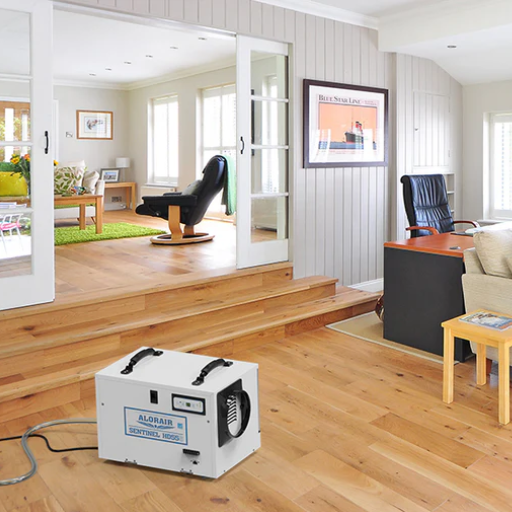
The whole home dehumidifier works in tandem with your HVAC system and is particularly useful in high-humidity areas. It efficiently helps control humidity within the home, thus avoiding problems like mold, structural damage, or deteriorating air quality. With the integration of the whole home dehumidifier, comfort is achieved throughout the house and helps relieve stress on the air conditioner. If your home consistently suffers from high levels of humidity, the integration of a dehumidifier with your HVAC system is the best choice to increase comfort, protect your property, and facilitate healthier living conditions.
Benefits of a Whole Home Dehumidifier
Improved Air Quality
By reducing excess moisture in the air, a whole home dehumidifier helps minimize allergens such as dust mites, mold, and mildew. According to recent studies, maintaining indoor humidity levels between 30-50% greatly reduces the survival rate of these harmful microorganisms, creating a healthier environment for your family.
Energy Efficiency
A dehumidifier works in tandem with your HVAC system to ease the workload on your air conditioner. With lower humidity levels, your home feels cooler at higher temperatures, allowing you to adjust the thermostat without sacrificing comfort. This can result in noticeable energy savings, with the U.S. Department of Energy estimating that you can save up to 10% annually on your cooling bills by optimizing your indoor humidity levels.
Protection for Your Home and Belongings
Excess moisture can lead to structural damage like warping, rotting wood, or peeling paint. It can also harm sensitive items such as electronics, books, and furniture. By controlling humidity, a whole home dehumidifier safeguards your property and maintains the integrity of your valuables.
Consistent Comfort Across Your Home
Unlike portable units that work in a single space, a whole home dehumidifier integrates with your HVAC system to evenly regulate humidity levels in every room. This ensures no part of your home feels overly damp or humid, providing consistent comfort throughout.
Health Benefits
High humidity levels can exacerbate respiratory issues, including allergies and asthma. Reducing indoor moisture creates a more breathable atmosphere, decreasing the likelihood of respiratory irritants. Research highlights the importance of balanced humidity in supporting overall wellness and reducing health risks associated with damp indoor conditions.
By addressing excess humidity holistically, a whole home dehumidifier combines comfort, efficiency, and health in one effective system, making it a key investment for long-term residential well-being.
Installation and Compatibility with Existing HVAC Systems
Integrating a whole home dehumidifier with an existing HVAC system is a straightforward process when planned and executed correctly. Modern dehumidifiers are designed to work seamlessly alongside most HVAC units, utilizing shared ductwork to effectively manage moisture levels throughout the home. Before installation, it is critical to conduct a detailed assessment of the HVAC system’s capacity and design to ensure compatibility and optimal performance.
When pairing the dehumidifier with an HVAC system, the unit is generally installed near the air handler or furnace. This allows it to draw in moist air directly through the return ducts, removing excess moisture before the air is circulated back into the home. Many dehumidifiers are engineered to function without impeding the airflow or efficiency of the current HVAC system. For example, some models feature built-in condensate pumps, allowing for hassle-free drainage even in spaces with no floor drains.
Data shows that a properly installed dehumidifier can significantly reduce HVAC strain. By maintaining a balanced humidity level, the cooling system requires less energy, as reduced moisture improves its ability to cool the air efficiently. Studies suggest that by controlling indoor humidity, homeowners can save up to 15% on energy bills, particularly in regions with high humidity levels.
For seamless installation, homeowners should consult qualified HVAC professionals who can properly size the dehumidifier for their specific system. Matching the capacity (measured in pints per 24 hours) of the dehumidifier to the home’s square footage and environmental factors will ensure both effectiveness and energy efficiency. Furthermore, many modern dehumidifier models are equipped with smart controls, allowing real-time monitoring and integration with existing smart thermostats for enhanced convenience and precise climate control.
Cost Considerations and Energy Efficiency
When evaluating dehumidifiers, it is important to balance initial purchase costs with long-term operational expenses. Prices for dehumidifiers vary widely based on capacity and features, with smaller models typically starting around $150 and larger, whole-home units costing upwards of $1,000. However, investing in energy-efficient models can significantly reduce long-term energy expenditures. Look for units certified by ENERGY STAR®, as these models use up to 15% less energy compared to non-certified options, translating to noticeable savings on utility bills over time.
Additionally, advanced features such as humidity sensors and automatic shut-off contribute to cost efficiency by ensuring the unit only operates when necessary. For example, a 50-pint ENERGY STAR® dehumidifier in a moderate climate can cost approximately $25 to $35 annually to run, compared to higher operational costs for less efficient models. This makes energy efficiency a critical consideration, as the savings can compound over several years of use.
Lastly, consider a unit’s maintenance costs, such as filter replacement or cleaning requirements. Models with washable filters or easy-access components can help lower maintenance expenses while ensuring peak performance. By prioritizing energy efficiency, functionality, and reliability, homeowners can make informed choices that align with both their needs and budget.
Reference Sources
Here are two recent studies related to the continuous operation of dehumidifiers:
-
Case Study on Dehumidifier Safety (2024)1:
- Key Findings: This study highlighted a safety incident involving the misuse of a liquid desiccant dehumidifier. It emphasized the importance of proper handling and awareness of dehumidifying agents to prevent accidents. The research underscored the need for user education on safe practices.
- Methodology: The study analyzed a specific case where improper use led to health hazards. It included a review of safety protocols and recommendations for improving user guidelines.
-
Impact of Climatological Factors on Building Maintenance (2025)2:
- Key Findings: This research explored the role of dehumidifiers in mitigating moisture-related building defects, such as mold and fungal growth. It recommended the use of dehumidifiers in areas with high humidity to maintain indoor air quality and prevent structural damage.
- Methodology: The study combined literature reviews, case studies, and observational data from buildings in tropical climates. It assessed the effectiveness of dehumidifiers in reducing humidity and preventing moisture-related issues.
Frequently Asked Questions (FAQs)
Q: Is it safe to leave a dehumidifier on all the time?
A: Yes, it is generally safe to leave a dehumidifier on all the time as long as it is a properly sized dehumidifier for the area, and it is equipped with features like a humidistat that automatically shuts off the unit once the desired humidity level is reached. This helps prevent the dehumidifier from constantly running unnecessarily.
Q: How does leaving a dehumidifier on all the time affect the humidity in your home?
A: Leaving a dehumidifier on all the time can effectively reduce the moisture in your home, maintaining a comfortable relative humidity level and preventing mold and mildew growth. It is essential, however, to set the humidity level appropriately to avoid over-dehumidifying the space.
Q: Can a dehumidifier run for 12 hours a day without issues?
A: Yes, a dehumidifier can run for 12 hours a day without issues, especially if the humidity level in your home is high. However, it is advised to monitor the dehumidifier daily to ensure it is functioning properly and not overworking.
Q: What are the benefits of using a dehumidifier with a humidistat?
A: A dehumidifier with a humidistat allows you to set a specific humidity level, enabling the device to automatically shut off once that level is reached. This feature helps conserve energy, prolong the life of the dehumidifier, and prevents the unit from constantly running.
Q: How much water can a dehumidifier remove in a day?
A: The amount of water a dehumidifier can remove varies depending on its size and capacity. On average, a typical home dehumidifier can remove several gallons of water per day from the air, effectively reducing humidity levels.
Q: What should I consider when choosing the best dehumidifier for my home?
A: When choosing the best dehumidifier for your home, consider factors such as the size of your dehumidifier relative to the space, the level of humidity in your home, and additional features like a humidistat or automatic shut-off. These considerations will help ensure efficient dehumidification.
Q: Is it necessary to keep your dehumidifier running in the winter?
A: In winter, the air is generally drier, so you might not need a dehumidifier running as often. However, in areas or rooms where moisture level remains high, it might still be necessary to run the dehumidifier to prevent mold and mildew growth.
Q: What is the impact of leaving your dehumidifier running all the time on energy consumption?
A: Leaving your dehumidifier running all the time can increase energy consumption, especially if the unit is not equipped with a humidistat to regulate its operation. To manage energy use, ensure you have a properly sized dehumidifier and set an appropriate humidity level for automatic operation.
Q: How often should a dehumidifier be emptied?
A: The frequency at which you need to empty your dehumidifier depends on the humidity level and the capacity of the dehumidifier. Some units may require daily emptying, while others with larger tanks or continuous drainage options may need less frequent attention.

